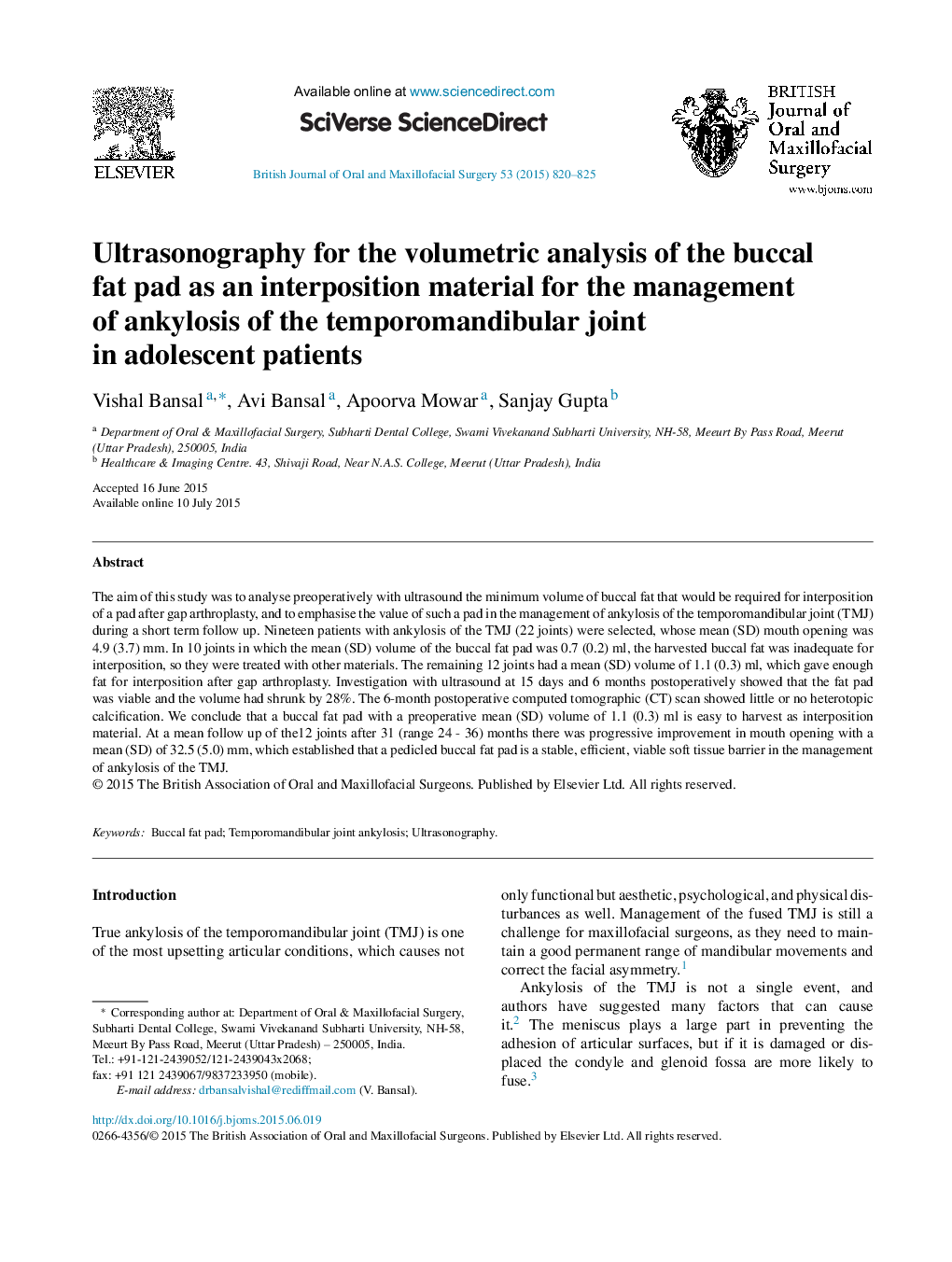| Article ID | Journal | Published Year | Pages | File Type |
|---|---|---|---|---|
| 3123021 | British Journal of Oral and Maxillofacial Surgery | 2015 | 6 Pages |
The aim of this study was to analyse preoperatively with ultrasound the minimum volume of buccal fat that would be required for interposition of a pad after gap arthroplasty, and to emphasise the value of such a pad in the management of ankylosis of the temporomandibular joint (TMJ) during a short term follow up. Nineteen patients with ankylosis of the TMJ (22 joints) were selected, whose mean (SD) mouth opening was 4.9 (3.7) mm. In 10 joints in which the mean (SD) volume of the buccal fat pad was 0.7 (0.2) ml, the harvested buccal fat was inadequate for interposition, so they were treated with other materials. The remaining 12 joints had a mean (SD) volume of 1.1 (0.3) ml, which gave enough fat for interposition after gap arthroplasty. Investigation with ultrasound at 15 days and 6 months postoperatively showed that the fat pad was viable and the volume had shrunk by 28%. The 6-month postoperative computed tomographic (CT) scan showed little or no heterotopic calcification. We conclude that a buccal fat pad with a preoperative mean (SD) volume of 1.1 (0.3) ml is easy to harvest as interposition material. At a mean follow up of the12 joints after 31 (range 24 - 36) months there was progressive improvement in mouth opening with a mean (SD) of 32.5 (5.0) mm, which established that a pedicled buccal fat pad is a stable, efficient, viable soft tissue barrier in the management of ankylosis of the TMJ.
